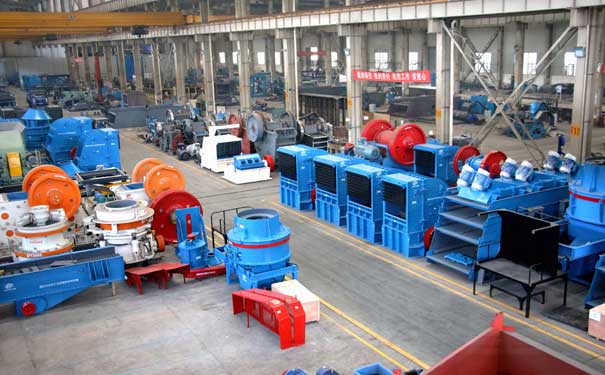According to the different construction and working principle, the commonly used crushing machinery mainly includes jaw crusher, impact crusher, hammer crusher, cone crusher etc. Each product will be produced according to the specific production. Requirements are divided into different specifications and models. Although there are many types of crushing machines, depending on the method of applying force, there are crushing, pulverizing, crushing, impact crushing and grinding methods on the material crushing. In the face of a wide variety of crushers on the market, are you worried about what crusher to buy? Are you upset about the low productivity of your crusher? If you want to solve these problems and improve the efficiency of the crushing equipment, you should have a comprehensive understanding of the characteristics of the broken materials, the method of material crushing, the classification of the crushing equipment, and so on. When selecting the crusher, the type, hardness, inlet and outlet particle size, and output and construction site of the crushed material should be fully considered.
1. Material hardness
The hardness of the material indicates the softness and hardness of the material. It has a direct relationship with the friability of the material. It is usually expressed in terms of Mohs hardness. It is divided into 10 grades. The higher the level, the harder the material is, the more difficult the crushing is, and the higher the requirement for crushing equipment is. Fragility indicates the physical properties of whether a material is easily broken. The factors affecting the friability are mainly the strength, hardness, density, structure, water content, viscosity, crack, surface condition and shape of the material.
2. The water content of the material
The water content of the material will also affect the choice of the crusher. When the water content is too large, the fine material will agglomerate or stick to the coarse material due to the increase of humidity, thereby increasing the viscosity of the material and reducing the rate of discharge. Productivity has declined. In severe cases, it may even cause blockage of the discharge port, which affects the normal production.
3. The degree of ore hair removal
The degree of ore breaking and cutting also directly affects the productivity of the crusher — because the ore is easy to fracture along the cleavage surface when the ore is broken, so the productivity of the crusher is correspondingly much higher than that of the ore with dense crushing structure.
4. Material size
Hard materials with larger or medium grain size are generally crushed and impact crushed, such as jaw crushers, coarse crusher impact crushers, and the like. Hard materials with a small particle size are generally crushed, impact-broken, and ground. The surface of the pulverizing tool has no teeth and is smooth.
5. Abrasive
Abrasive materials are generally crushed, and the surface of the pulverizing tool is smooth. Abrasive materials use impact crushing, crushing, grinding, and sharp teeth on the crushing tool.
6. Tough materials generally use shear or fast strike, such as hammer crusher.
7. Powder or muddy materials should be crushed, impact crushed or crushed, such as ball mill.
8. Multi-component materials are crushed by selection under impact, and various force fields can also be combined.
Therefore, before selecting the pulverizing equipment, the user must first adopt the corresponding force-applying method according to the material properties of the granules, the pulverized product, and the granularity to determine the way of pulverizing and applying force, and then determine the smashing equipment model. I hope that the above points can give you some suggestions when choosing a crusher. Welcome everyone to Luoyang Dahua to inspect the plant and crusher, consult the crusher selection problem, we will have professionals according to the material properties you want to break, the characteristics of the production area to equip you with the most suitable crusher!

